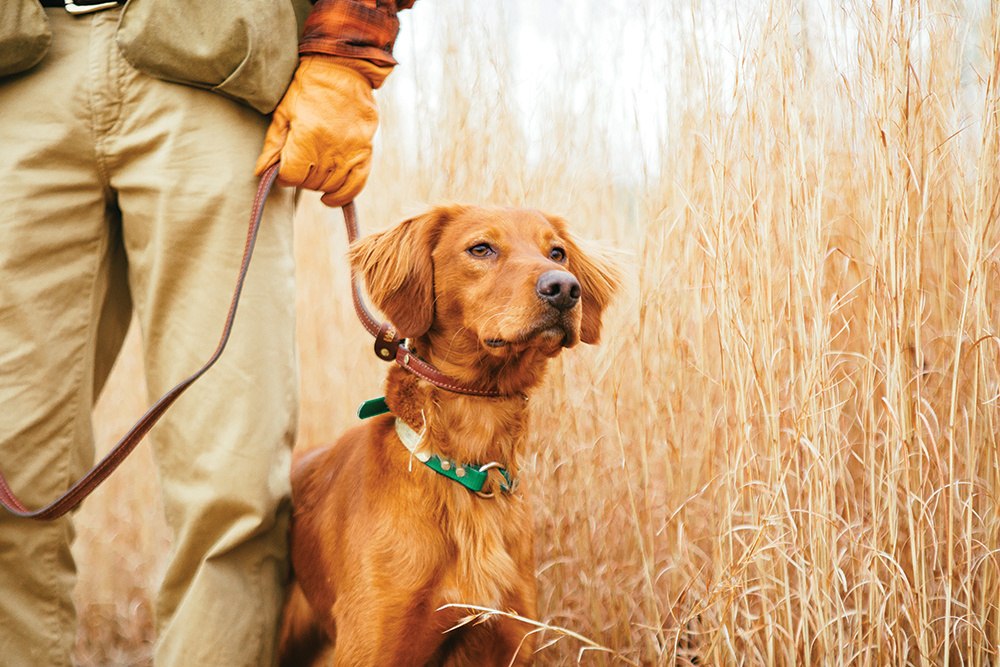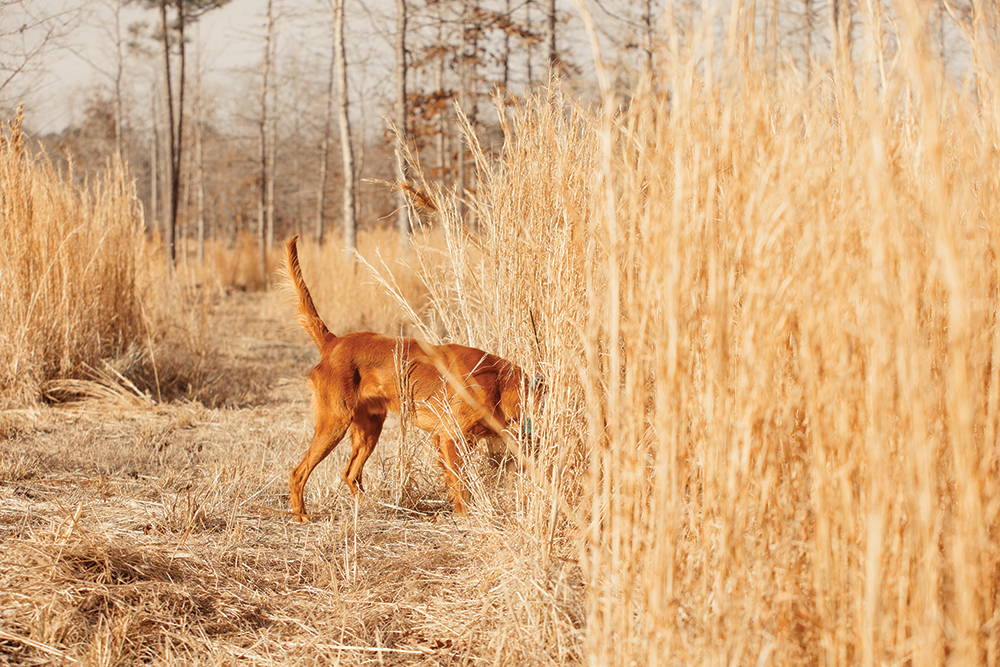The Book’s Cover

My mom taught me to never judge a book by its cover. Whether it was seeing the new kid at school for the first time or the way a surprise dish looked on my supper plate, there was always more to the story, and you must take the time to read the rest of it before forming a knee-jerk opinion. You could learn that liver and onions aren’t so bad, or you just might meet your new best friend.
When I was much younger, I didn’t always believe everything that my mother said, but she pounded this idea into my head throughout my life. Of all the times that I didn’t listen to her, this is one lesson that I actually did eventually take to heart—but I had to learn the hard way.
For instance, I found that bird dogs are like books. As I maneuvered through a foray into the upland-hunting world as a career, I had the opportunity to hunt with just about every breed in the woods and on the prairies. Just like a book cover, the physical appearance of every dog might spark the tendency for the viewer to pass judgment. You might think, This dog can’t hunt, at least not the way that I want to. But trust me—beware of spontaneously forming baseless beliefs.
I remember back to the day when I learned to flip the cover and read all of the pages of a bird dog’s story, and it was a tale that shaped the future of my upland experience.
Towns in the Dakotas are small, almost all of them on a river of some sort, the product of farming operations in the old days. They were close-knit communities when settled and remain so, for the most part, today. All strangers who ride into town stick out like a sore thumb. Even so, townsfolk wave at passersby every time, no matter who they are. They greet you with a smile and a handshake.
I had arrived late the night before and couldn’t think of anything else but breakfast early the next morning before the hunt. Across main street from the motel was an eatery with one shingle hanging over the door that read “Café.” As I walked inside, the place was surprisingly packed with a frenzy of audible conversation throughout the room about the recent rain and Friday night’s football game. No seats were available, and I stood there looking around for a second while thinking of another plan.
Just before I turned for the door, a waitress walked up to me and said, “Ol’ Jack has a seat if you don’t mind sitting in the corner.” For one, I didn’t know who Ol’ Jack was, and for two, it would be awkward sitting with a stranger, but I was hungry and obliged to sit down.
As I approached the booth, I regretted my decision for a second. Ol’ Jack wore a knee-length leather duster, a full beard, and greasy hair down to his shoulders. Rough and rugged is an understatement, I thought. As he was starting to scoop up some scrambled eggs, I noticed a blaze-orange hat sitting on the side of the table, which made his first comment to me make sense. “Sit down, my friend. I saw your brushworn pants at the door. I could use the company of another hunter,” he said.

Despite never wanting to meet this man alone in a dark alley after bar close, I felt comfortable right away and appreciative for a place to sit. “What kind of dogs?” was his first question, assuming I had some, and before even asking for my name. I said that I had two tri-colored English setters.
“Okay” he replied, rather unimpressed.
As I sheepishly ordered and later ate my eggs over-easy, bacon, and white toast, Jack just wanted to talk about dogs, mostly his own. I felt like someone was feeding dollars into the jukebox so that he could continuously tell stories, over and over. He had many dogs at the time but primarily focused on one that morning—different stories, same dog.
As I eventually paid the bill for both of us, I had already learned where this particular dog was whelped; how much he ate every day; that he got special treatment by riding shotgun to the bank and grocery store; that he pointed his first pheasant in a shelterbelt off of Cheyenne Road; and that he had supposedly pinned at least a dozen birds the day before. The stories went on forever, and I felt like I knew it all. From Jack’s words, the dog sounded impressive, but we all love our own dogs to a fault. I was doubtful.
But I channeled my mother’s lesson and am fortunate for that. Through that early morning, as fate would have it, I had met a new friend. Jack knew his stuff, and as far as upland hunting goes and despite his rough exterior, I learned that he was a local legend in terms of bird dogs and hunting in that area. He took me under his wing and even invited me to hunt with him for the rest of the day. I could have judged this book by its cover, but I was glad to have endured the first few pages and excited to read the rest of the story, especially eager to watch his dog run.
As we walked out of the café, Jack again donned the blaze-orange cap and tipped it to some farmers sitting at the round table nearby. He jumped in his rusty red Ford and pointed north saying, “Let’s go thataway.” The path of black smoke was not hard to follow as the truck burned oil the whole way down the gravel roads. I lost track of miles and time as we meandered on the field roads that etched lines across the prairies. We drove past stands of switchgrass that I would have loved to hunt, but Jack knew where he wanted to go. Thank goodness. Otherwise, I’d have been lost after the first boathook bend in the road.
We finally parked alongside the edge of what was nothing more than a dusty two-track trail in the middle of nowhere. Jack had a wood-built, three-stall dog box in the back of his truck, homemade with leftover plywood and mismatched latches from his garage, I was sure. He let out his prized dog and quickly put a bell on his collar, but nothing else—no GPS or beeper around. I noticed that Jack transferred a necklace from his rearview mirror to his neck, adorned with only a compass on it for direction. You have to hand it to the fearless old guard who have been doing this for years. I was trusting Jack, and for some reason, I was okay with that. Before I could even strap on my vest, we were heading west on the hunt.

When Jack first let his dog out of the kennel, I was surprised to see that he was a red setter. For some reason, Jack never mentioned that to me at breakfast, but looking back, I think I get it now. On first blush, the dog didn’t look particularly “prized” to me. But to Jack, what the dog looked like didn’t matter to him, never crossed his mind. In fact, his full kennel was a colorful cast of characters: this red setter, two pointers (one with a broken tail), a Brittany, and even a springer spaniel. He cared more about what dogs have got on the inside than what they look like on the outside.
When dropped on the ground, this red setter ran at a lively pace, agile and athletic, yet not too fast or aggressive. It is difficult to explain, but the dog made brilliant decisions, hunting only productive habitat, seemingly knowing where the birds would be found. He was strategic, playing the cat-and-mouse game of poker with the birds, understanding when to slow play, never bluffing, and ready to go all in when necessary.
This dog was dramatic, slowing down at the right times and places, working closer and closer with a crescendo toward the inevitable climax of the point. At the approach, his eyes were intense and confident, and time stood as still and staunch as the dog did at the flush of the bird, the epitome of eloquence afield. And notice that none of this pertained to the bird dog’s appearance. The fascination with this dog came solely from the story told on the pages within him.
We hunted hard that day, maybe harder than I ever had before. Jack had been doing it for many more years than I had and taught me a few things, albeit in his own antiquated way. We hit birds and missed birds, but the red setter always did his job. When I look back at it, for me, the hunt was all about that one animal. The day ended at the tailgate with a Budweiser and a sense of euphoria, the crazy thought that I had just maybe witnessed perfection afield, although I don’t believe that absolute perfection is possible in anything. However, if perfection is an outcome we can never attain, then I probably witnessed something as close as I pondered it could be.
I like to say that performance of a bird dog is relative to the expectations of the owner—to each, his own. We know what we like in dogs, and that comes from an experience afield in some place at some time. We all recall the day with that one dog, the day when owning one, the right one, became meaningful. And, when those memories flood back into our mind, they are so vividly etched, as if a template for the desired traits that we strive to see in our future dogs. The lucid details of the encounter are effortlessly evoked in our mind’s eye, each and every one never to be forgotten.
For me, that day with Ol’ Jack’s red setter was one of those days. Bird dogs are like books. Take the time to read their whole story, and it just might form your desired traits for future dogs and change the rest of your life in the uplands.

Originally published in Volume 9, Number 5 (Aug-Sept 2021) of Covey Rise.
























